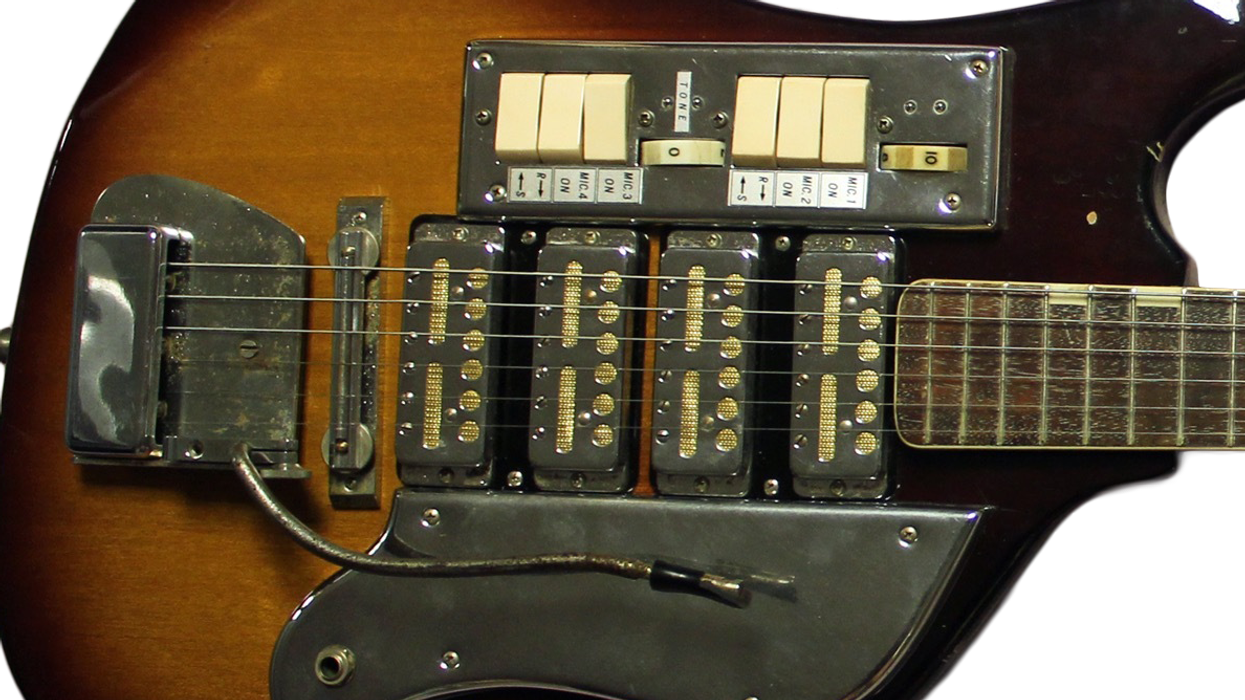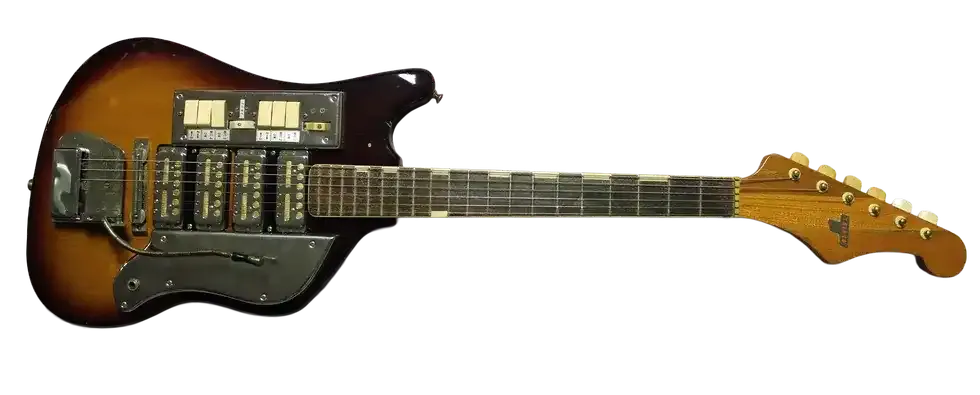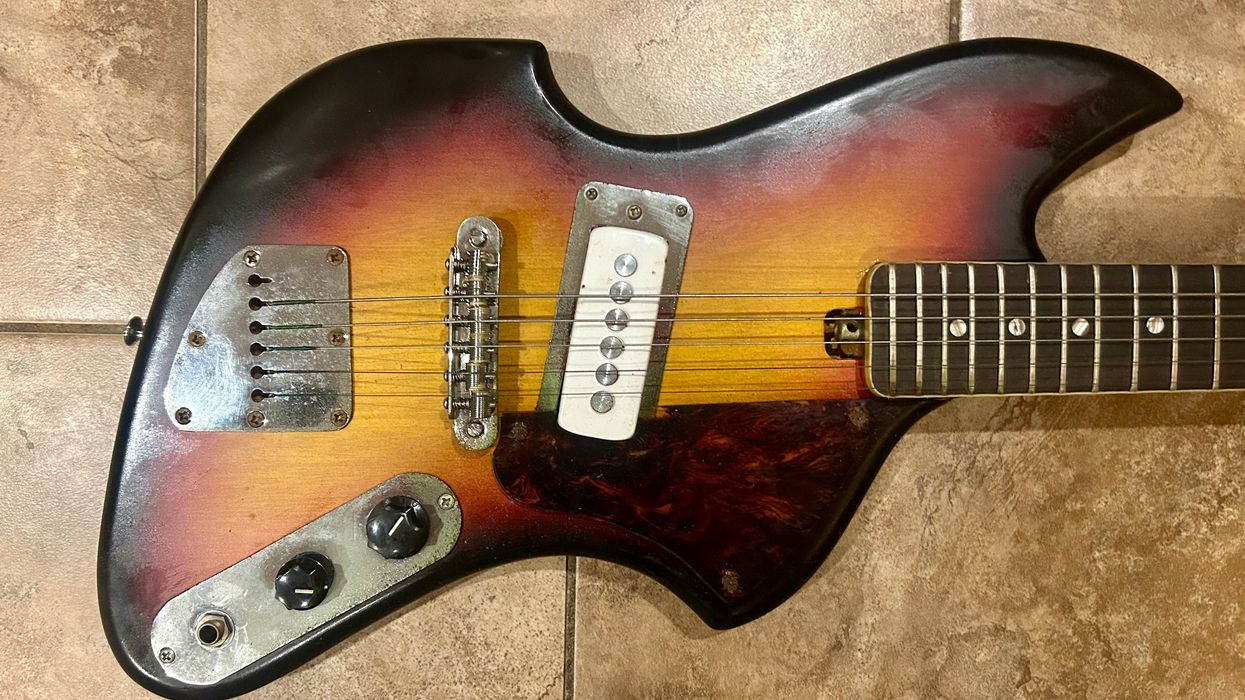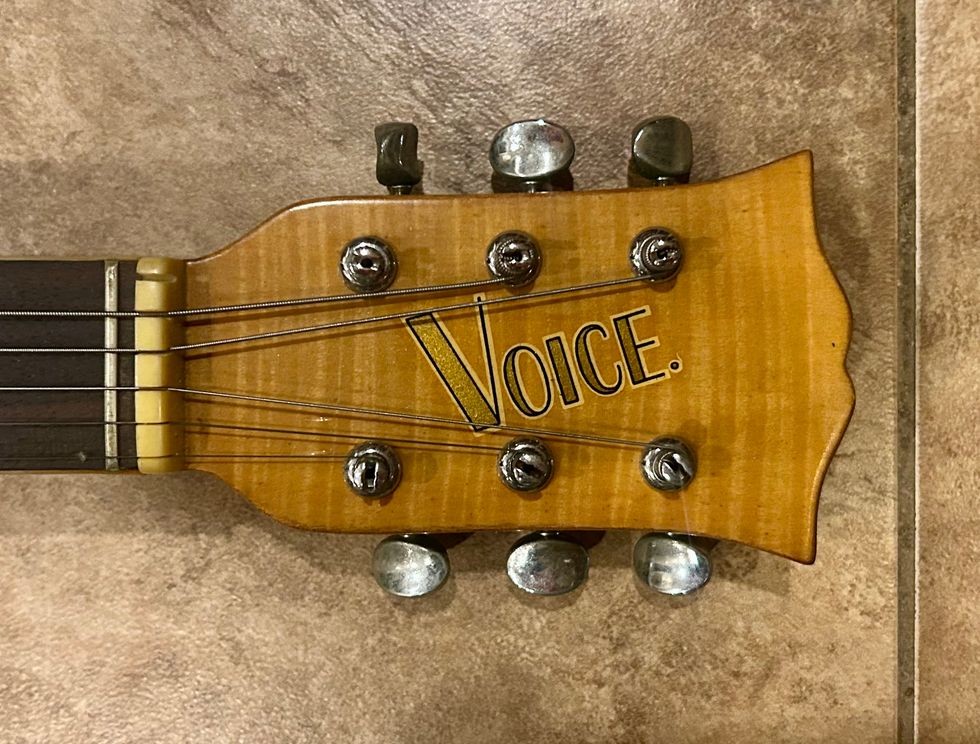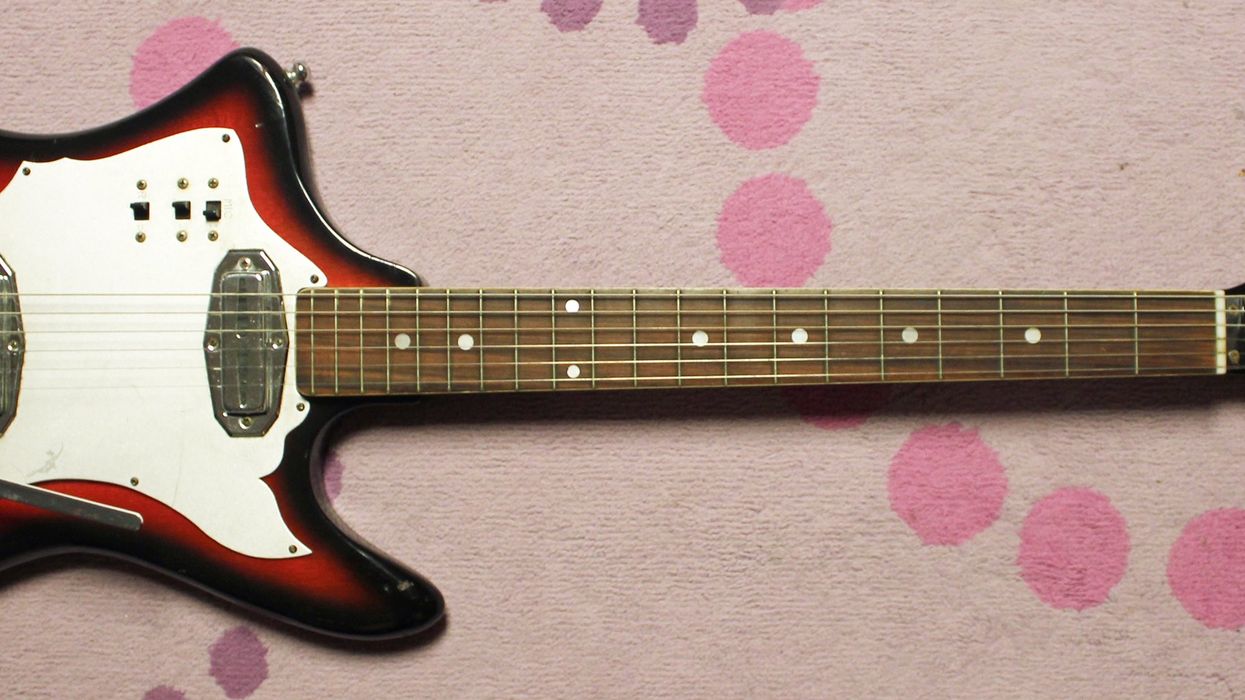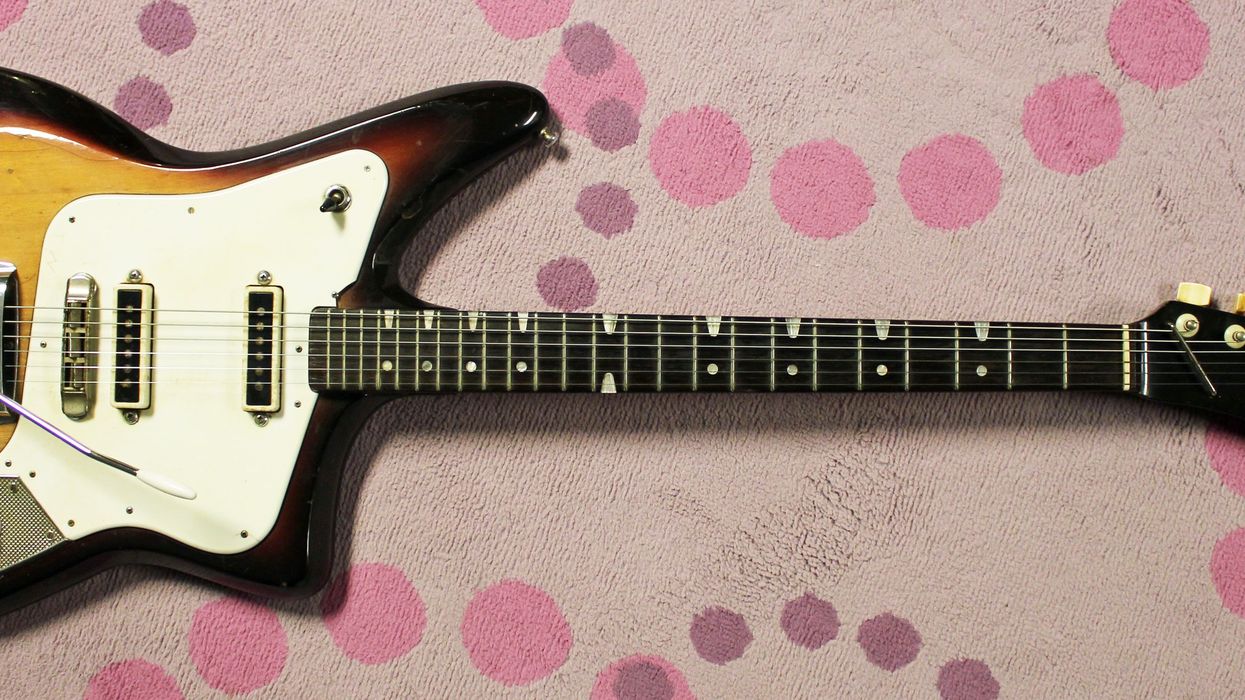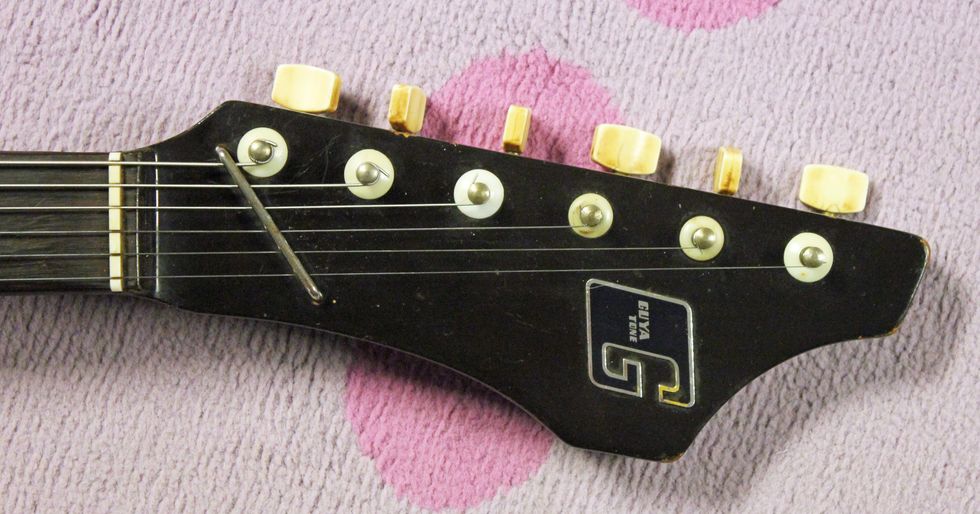The old Valco company holds a real fascination for me. Back in the day, the U.S. had major guitar companies like Fender, Gibson, Gretsch, and Rickenbacker. And then there was the slightly odder, slightly weirder Valco, which set out to compete with the higher-profile brands, but always approached the endeavor with a really strange game plan.
For instance, in the late '50s, Valco coated guitars in a plastic "no-mar" finish which prevented wear but deadened the sound. If a guitar was getting too heavy, they simply drilled relief holes in the back and covered them up with a plastic cover. Even the pickups used on most Valco guitars were different. They looked like humbuckers, but were actually single-coils that had unique dimensions, so simple pickup swaps were just about impossible. And while other manufacturers were experimenting with different tonewoods, Valco went with fiberglass guitars—later popularized by Jack White. In a lot of ways, Valco was one of the most interesting guitar makers from the heyday of electric guitars, and there are rare gems to be mined from those days of odd.
Now, Valco might not be a household name to many of you, but the Supro, National, Oahu, and Airline brands might ring a bell. Similar to many of the Japanese companies back in the day, Valco rebranded its guitars based on who sold them and where they sold. Supro is probably the most popular and most common of these brands, and their instruments are where I started to love the logo with the lightning bolt.
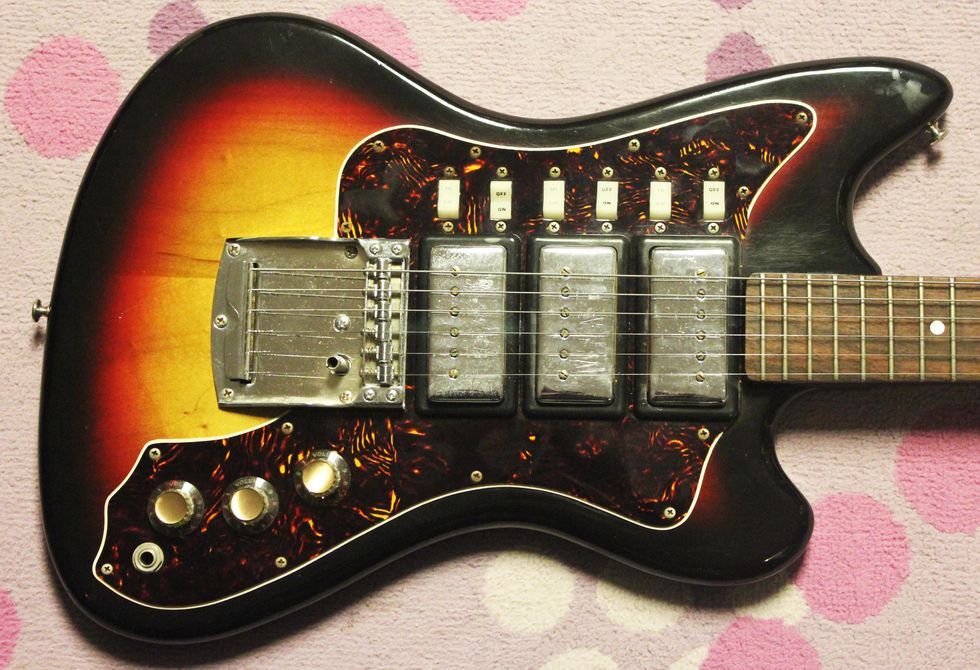
Sure, they look like humbuckers, but this guitar is actually loaded with three single-coil pickups.
See, many years ago, I saw this 1968 Supro Lexington and really became entranced. This looked sort of like a Stratocaster but had three humbucker looking things! In my mind, that made for one mean-looking guitar, and, at 16 years old, I was all about that. People always talk about yard-sale finds, but this guitar was probably my one and only cool yard sale find, ever!
This model first appeared in the 1965–'66 Supro catalog and was simply called a "shaded"—instead of "sunburst"—No. S545. A few catalogs later, these were dubbed Lexingtons and always came in three-, two-, and one-pickup varieties. Retailing at around $200, they were pricey but didn't compare to any other guitar from the time. Rather than having adjustable truss rods, almost all Valco guitars had "Lifetime Kord-King" necks, which sported a rather robust metal U-shaped rod that extended through the neck. The design worked pretty well, but if the neck wasn't set up properly at the factory, the guitar was going to have lifetime issues!
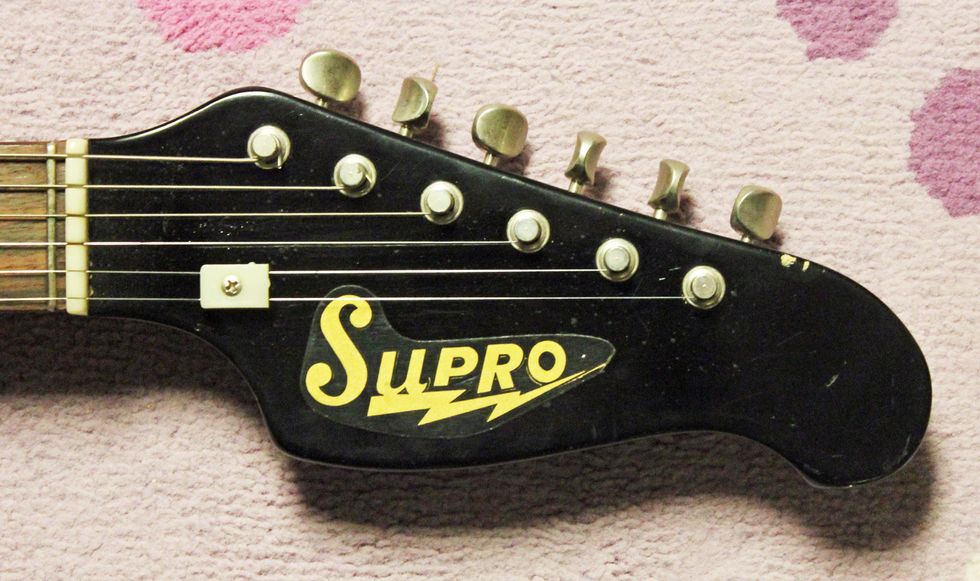
Is there a cooler logo than Supro's vintage lightning bolt design?
Additionally, these Lexingtons sported a rather complex control system called "tone shading," which was like a high/low tonal option for each pickup. But all the tone shading really covered up some amazing tones from the in-house-made Valco pickups and rendered just about all tonal options … well … kind of blah. Fortunately, these guitars can really be saved by removing all those tone-sucking caps and wiring everything point-to-point, which allows this model to shine. The Valco pickups were always hot and added a bit of sizzle that Fender single-coils could never really produce. The controls are one volume and two tone knobs, plus two rocker switches for each pickup—one for on-off and one for high-low tones.
A good way to date these guitars is to look at the vibrato units. If there is a separate bridge and vibrato, then it's an earlier model, but if there is an all-in-one unit, it's from the later '60s. Interestingly, the all-in-one unit was designed and made by the old Japanese Matsumoku factory, and I suspect that Valco was sourcing the wood bodies from Matsumoku as well, in typical cost-cutting Valco fashion. Either way, if you can get your hands on an old Lexington and get the electronics sorted out, then you might get a bit of that tingly feeling I had back in the day. Ah, to be 16 again!
1968 Supro Lexington Guitar Demo #3
Hear guitarist Mike Dugan play through all of the Supro Lexington's wild and woolly tones.
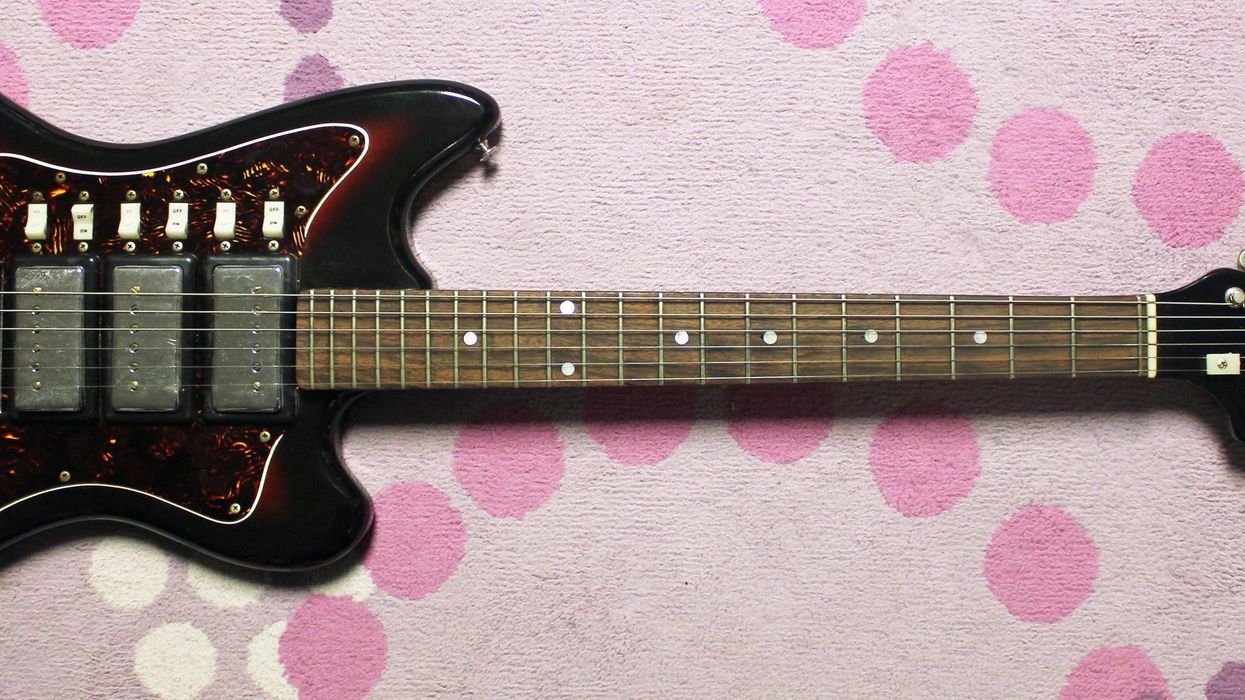

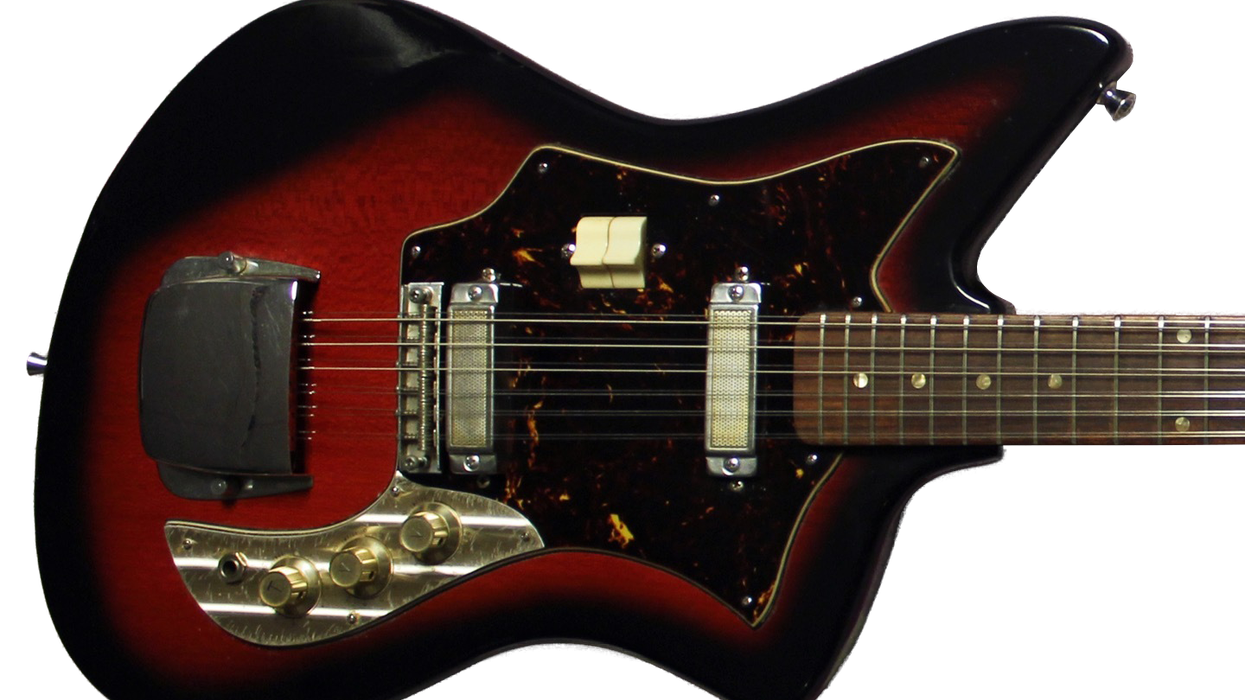
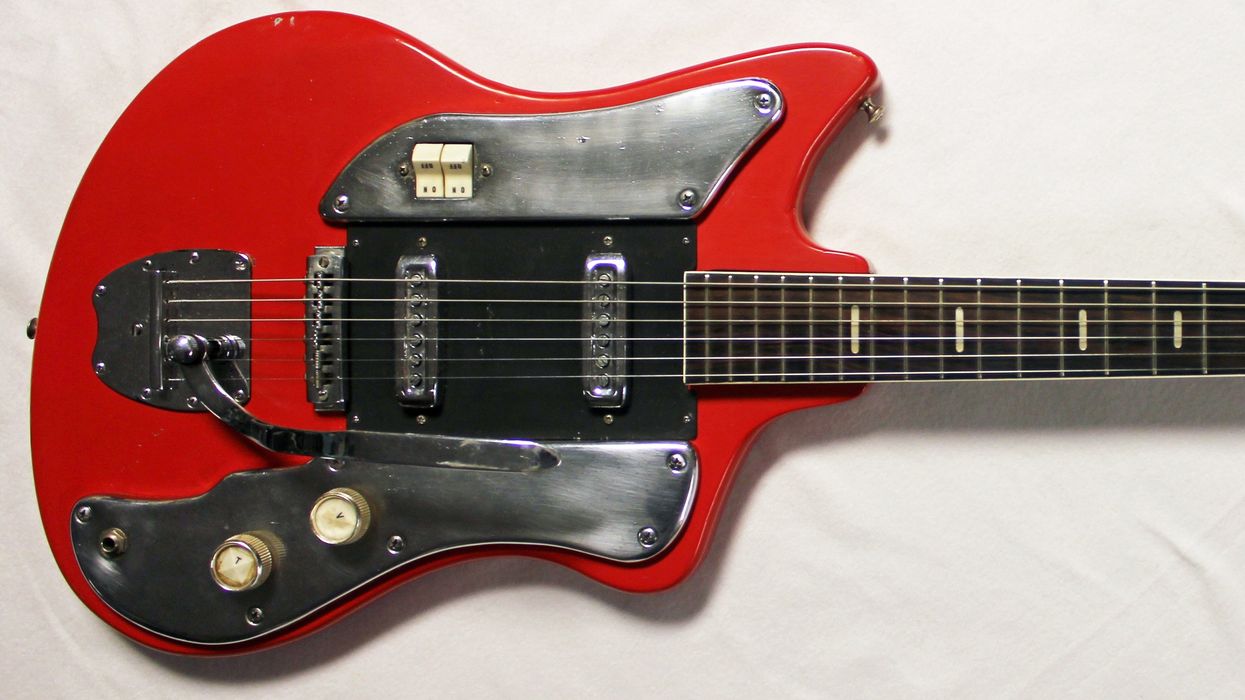
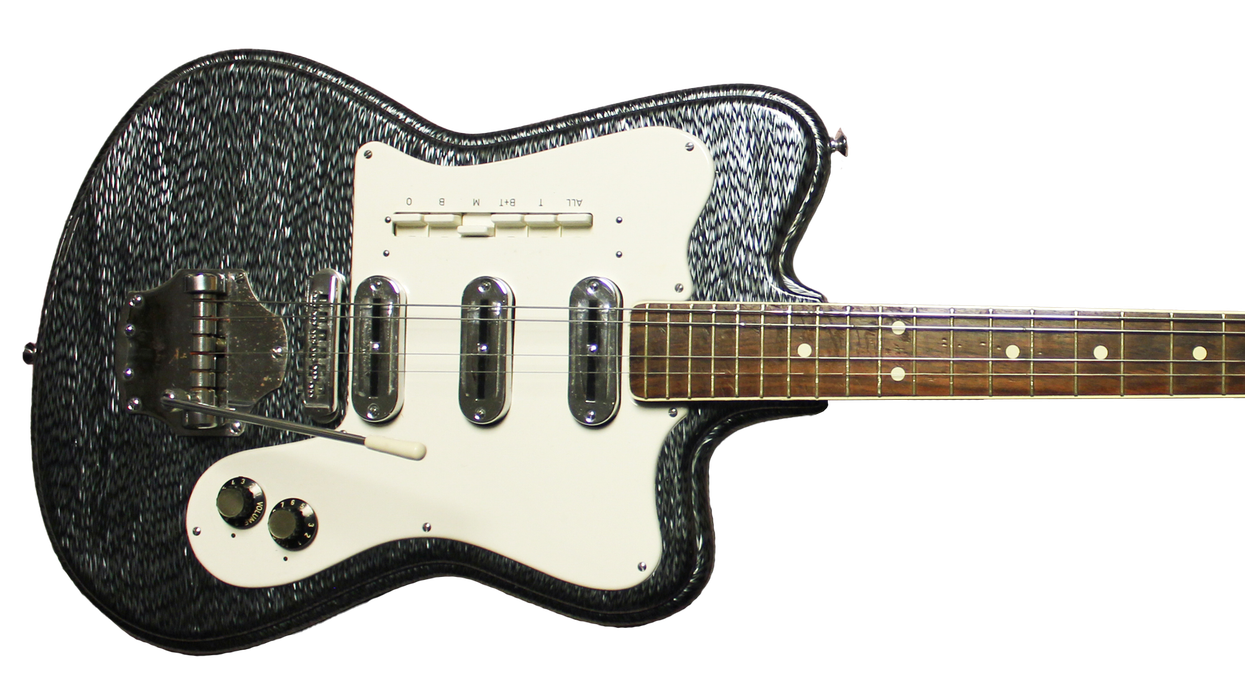
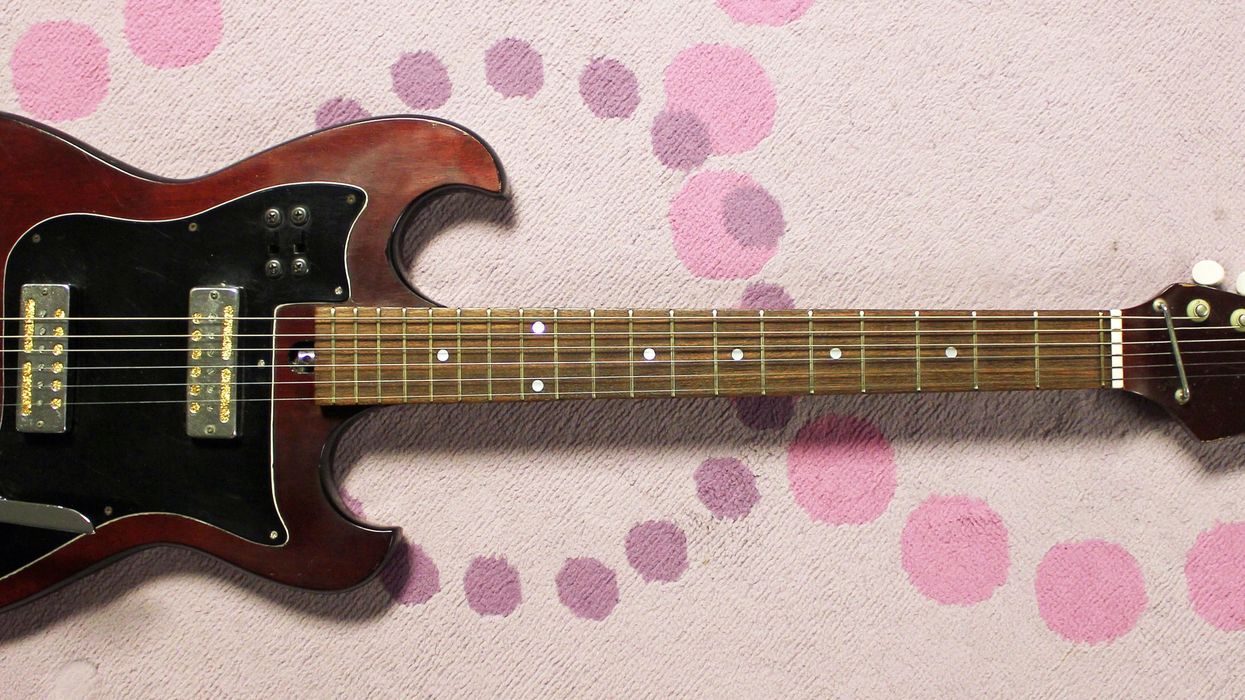
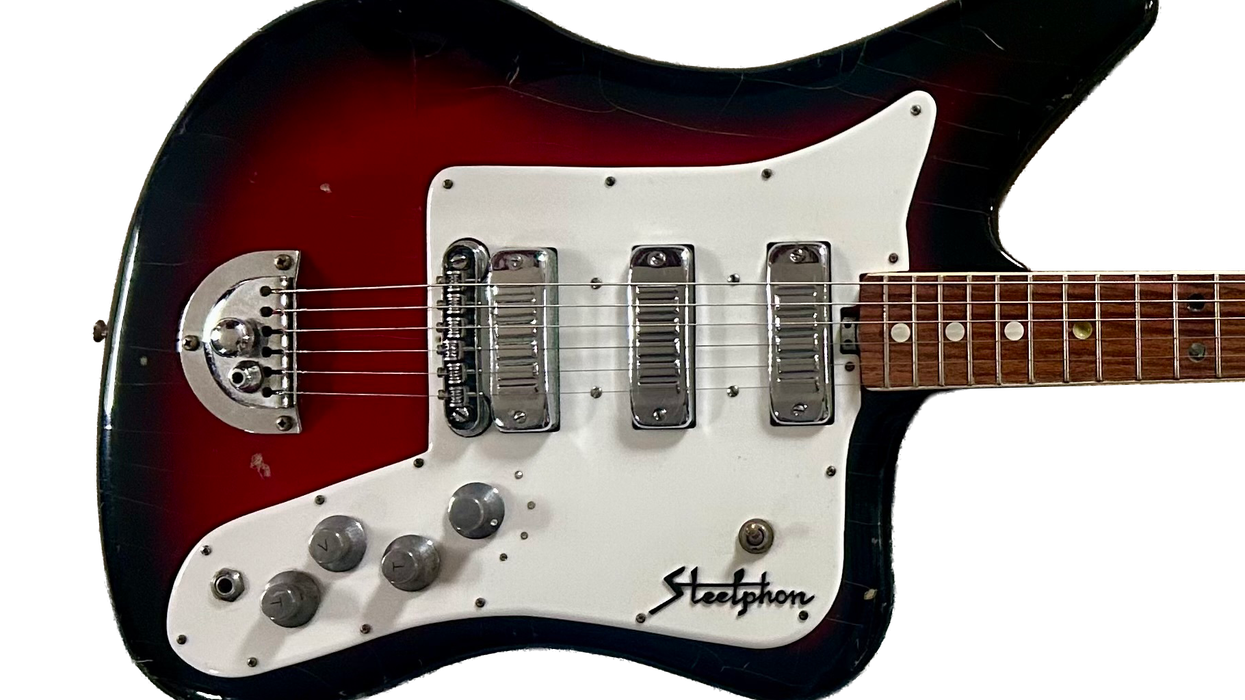
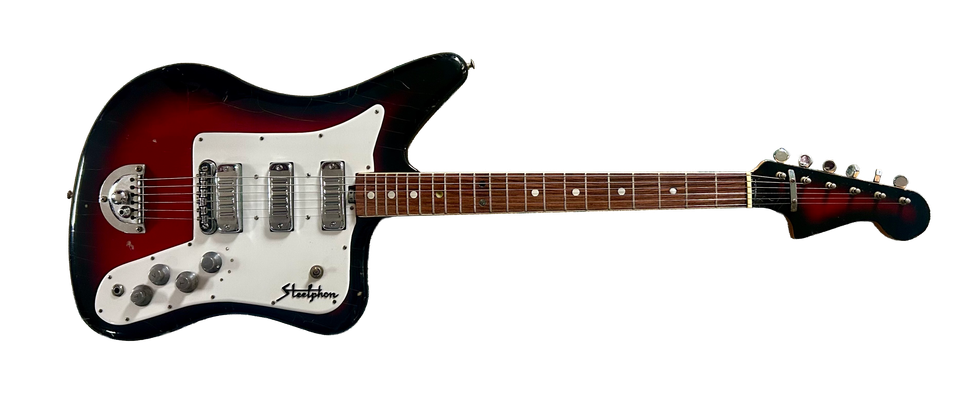 Then, in the dream, I “awoke” and realized I was back in my bedroom, and it was all just a dream. The kicker is that I was still dreaming, because that “paddle” guitar was suddenly in my hands—then I woke up for real! How about that misadventure?
Then, in the dream, I “awoke” and realized I was back in my bedroom, and it was all just a dream. The kicker is that I was still dreaming, because that “paddle” guitar was suddenly in my hands—then I woke up for real! How about that misadventure?![Devon Eisenbarger [Katy Perry] Rig Rundown](https://www.premierguitar.com/media-library/youtube.jpg?id=61774583&width=1245&height=700&quality=70&coordinates=0%2C0%2C0%2C0)





